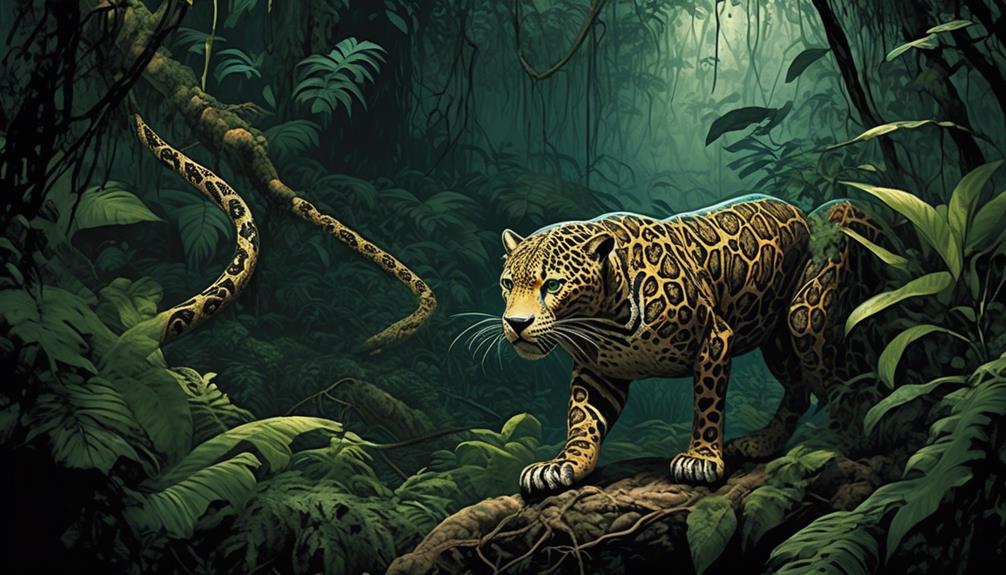Are you aware that Peru is home to some of the most dangerous animals hiding in the shadows?
From the depths of the rainforests to the urban areas, these creatures possess deadly weapons that can cause serious harm.
Imagine encountering a Poison Dart Frog with its potent toxin or stumbling upon an Amazonian Giant Centipede lying in wait.
And that’s just the beginning. There are venomous spiders, pain-inducing ants, powerful reptiles, and even an Electric Eel capable of stunning its prey.
So, if you think you can handle the dangers that lurk in Peru’s hidden corners, keep reading to uncover the secrets of survival in the face of these deadly creatures.
Poison Dart Frog
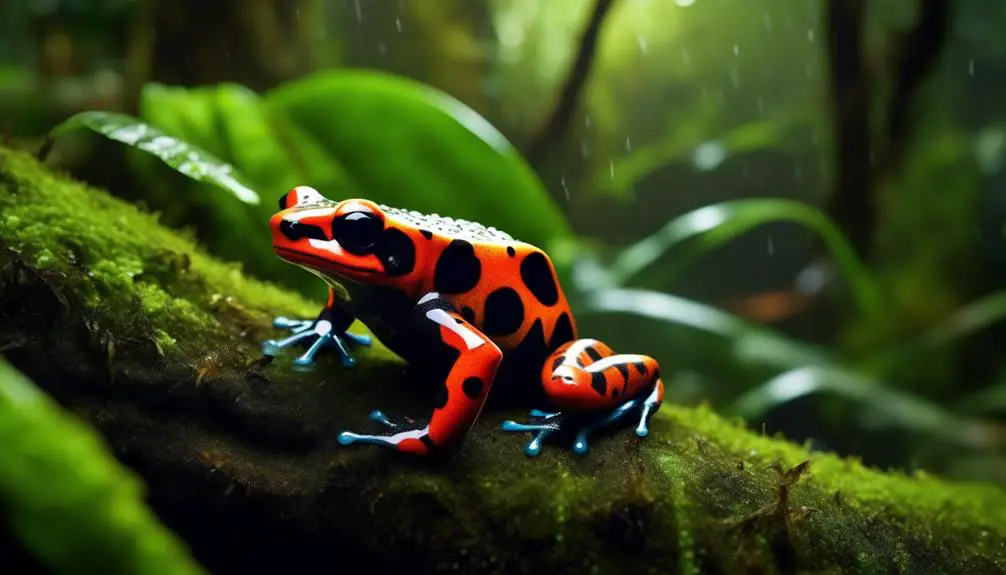
The Poison Dart Frog, also known as Phyllobates terribilis, is a highly dangerous amphibian found in the wet areas of the Peruvian rainforest. This small creature may seem harmless due to its vibrant colors and petite size, but it possesses a potent and deadly weapon. The skin of the Poison Dart Frog excretes a highly toxic substance that can be fatal to predators and even humans. The toxicity of this frog’s skin is so potent that it can cause paralysis, heart failure, and ultimately death.
Being a member of the Dendrobatidae family, the Poison Dart Frog has evolved to produce these toxic substances as a defense mechanism. The bright colors of their skin serve as a warning to potential predators, indicating their lethal nature. It’s advised to avoid any physical contact with these frogs, as even a minor scratch or wound can result in severe consequences.
The Poison Dart Frog’s toxicity is so powerful that there’s currently no known antidote for its venom. In case of exposure, immediate medical attention is necessary to mitigate the effects and provide supportive care. It’s crucial to exercise caution and respect when encountering these amphibians in their natural habitat, as their beauty belies their deadly potential.
Amazonian Giant Centipede
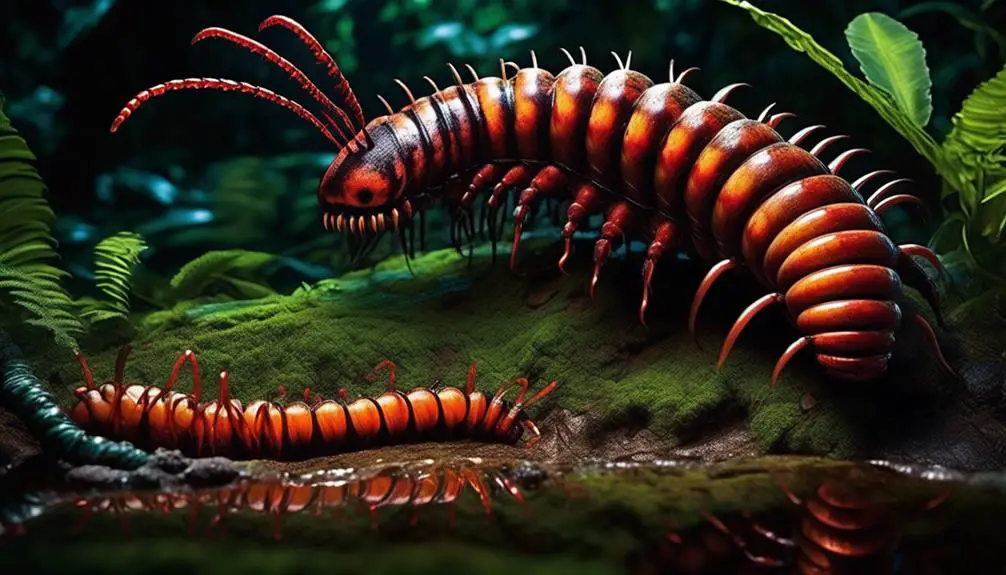
Found in the dark and damp jungle spaces of Peru, the Amazonian Giant Centipede, scientifically known as Scolopendra gigantea, is a venomous creature that poses a serious threat to those who cross its path. This formidable arthropod belongs to the class Chilopoda and can reach lengths of up to 12 inches, making it one of the largest centipede species in the world. Its body is comprised of multiple segments, each adorned with a pair of sharp, venomous forcipules, or modified legs, located near its head.
The venom of the Amazonian Giant Centipede contains a potent cocktail of toxins that it administers through its bite. This venom is designed to immobilize and kill its prey, which primarily consists of insects, spiders, and small vertebrates. However, if a human encounters this centipede, it can deliver a painful and potentially dangerous bite. The venom can cause intense pain, swelling, and localized tissue damage.
If bitten by an Amazonian Giant Centipede, immediate medical attention is necessary. Treatment typically involves using a hot compress to dilute the venom, followed by ice packs to reduce any swelling. Painkillers may be administered to manage the intense discomfort associated with the bite. It’s important to note that allergic reactions to the venom can occur, and in severe cases, medical intervention may be required.
To avoid encountering the Amazonian Giant Centipede, it’s recommended to exercise caution when exploring the jungle and to wear protective clothing and footwear. These precautions can help minimize the risk of a potentially dangerous encounter with this venomous arthropod.
Brazilian Wandering Spider
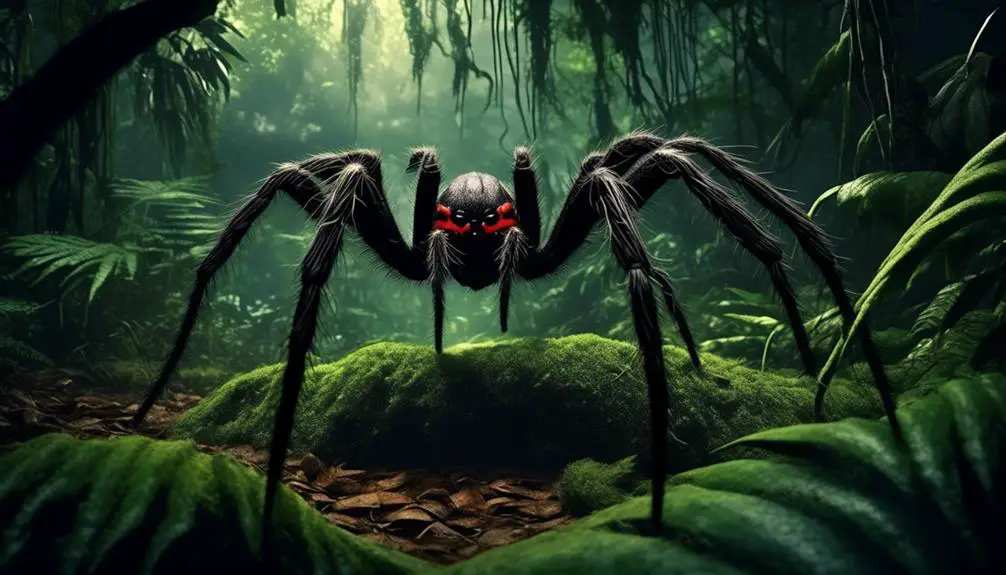
After discussing the Amazonian Giant Centipede, let’s now turn our attention to the Brazilian Wandering Spider, a highly venomous arachnid found in Peru’s dark and sheltered areas.
The Brazilian Wandering Spider, scientifically known as Phoneutria, is considered one of the most dangerous spiders in the world. It’s known for its aggressive behavior and potent venom. The spider’s bite can result in muscle paralysis, respiratory issues, and even death if left untreated. The venom contains a potent neurotoxin that affects the nervous system, causing intense pain and potentially fatal complications.
The Brazilian Wandering Spider is often found in homes and other urban areas, seeking shelter in dark spaces. It’s important to exercise caution when encountering this spider and seek immediate medical attention if bitten.
While Peru is home to several species of dangerous spiders, the Brazilian Wandering Spider stands out as the most toxic and should be avoided at all costs.
Bullet Ant
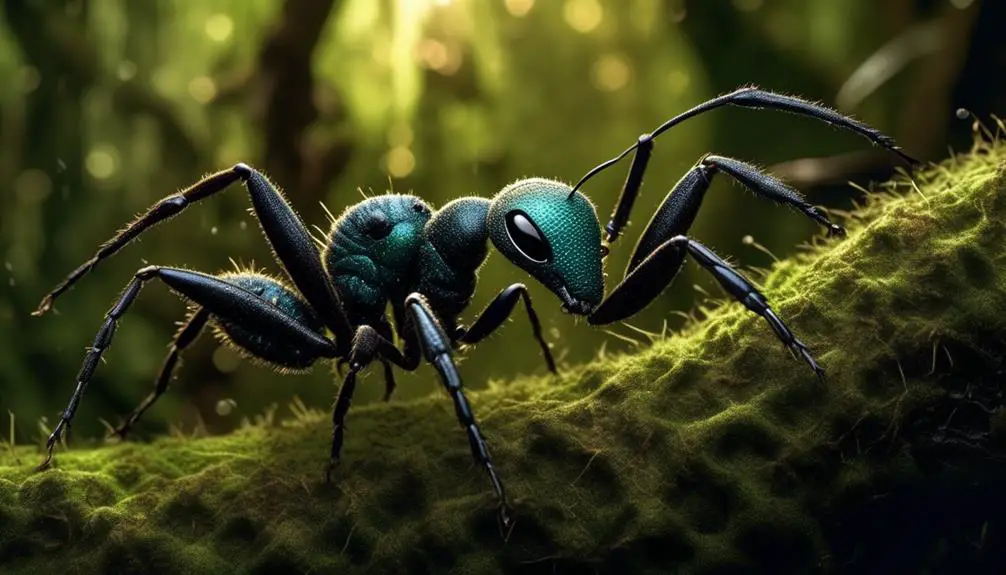
The Bullet Ant, scientifically known as Paraponera clavata, is considered one of the most painful stinging insects in the world. This large ant species derives its name from the excruciating pain caused by its sting, which has been compared to the feeling of being shot by a bullet.
Found in the rainforests of Peru, particularly near the forest floor, the Bullet Ant is known for its powerful sting that can last up to 24 hours, earning it the reputation of having the most painful sting in the insect kingdom.
Measuring about 1-2 inches in length, the Bullet Ant possesses a powerful venomous sting that’s capable of incapacitating its prey. The venom contains a potent cocktail of toxins that can cause intense pain, swelling, and even temporary paralysis. The sting is delivered through a sharp and curved stinger located at the end of its abdomen.
Despite its painful sting, the Bullet Ant serves an important ecological role in the rainforest ecosystem. They actively prey on smaller insects and arthropods, helping to control their populations.
Additionally, indigenous tribes in the Amazon have utilized the Bullet Ant in their initiation rituals, where young males endure being stung multiple times as a rite of passage into manhood.
Mosquito
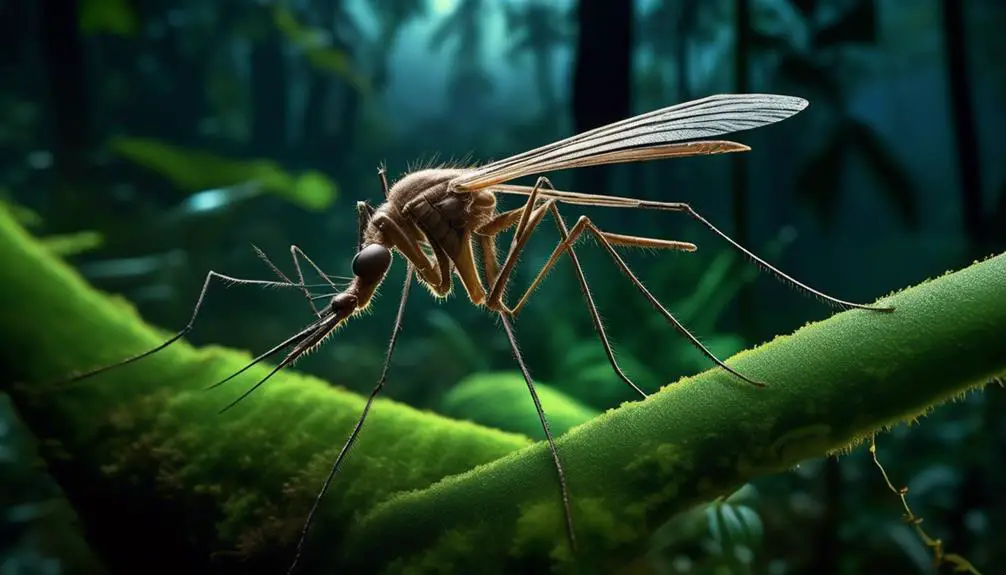
Now let’s turn our attention to the mosquito, a seemingly harmless insect that can have a significant impact on human health.
Mosquitoes are known for their ability to transmit diseases through their bites, such as malaria, dengue fever, and Zika virus. These diseases can have serious consequences, ranging from mild symptoms to life-threatening conditions.
To protect yourself from mosquito-borne diseases, it’s crucial to take preventive measures such as using insect repellents, wearing protective clothing, and eliminating stagnant water sources where mosquitoes breed.
Disease Transmission Methods
Mosquitoes, as carriers of vector-borne diseases, play a significant role in the transmission of illnesses. These tiny insects have the ability to transmit diseases such as malaria, dengue fever, Zika virus, and yellow fever. They are capable of transmitting these diseases through their bites, injecting the pathogens directly into the bloodstream. The table below provides a brief overview of some of the diseases transmitted by mosquitoes, their symptoms, and available treatments:
| Disease | Symptoms | Treatment |
|---|---|---|
| Malaria | Fever, chills, body aches | Antimalarial medications |
| Dengue Fever | High fever, severe headache, joint pain | Supportive care, rest, fluids |
| Zika Virus | Mild fever, rash, joint pain | Supportive care, rest |
| Yellow Fever | Fever, headache, jaundice | Vaccination, supportive care |
It is important to take precautions when in mosquito-prone areas, such as using insect repellents, wearing protective clothing, and sleeping under mosquito nets. Additionally, seeking medical attention promptly if experiencing symptoms after a mosquito bite is crucial for early diagnosis and treatment.
Impact on Human Health
The impact of mosquito-borne diseases on human health can’t be underestimated. Mosquitoes, specifically the Aedes albopictus species, are carriers of vector-borne diseases transmitted through their bites. These diseases include malaria, dengue fever, Zika virus, and chikungunya.
Mosquitoes thrive in areas close to water sources, such as rivers and ponds, making them prevalent in Peru’s rainforest regions. The transmission of these diseases can have severe consequences for human health, ranging from mild symptoms to life-threatening conditions.
It’s crucial for individuals in these areas to take preventive measures, such as using mosquito repellent, wearing protective clothing, and sleeping under mosquito nets. Vaccinations and medication are available from medical professionals to help mitigate the impact of these diseases.
It’s essential to prioritize the control and prevention of mosquito-borne diseases to safeguard human health in Peru.
Preventive Measures
To protect yourself from mosquito-borne diseases in Peru’s rainforest regions, it is important to implement preventive measures. Mosquitoes, specifically the Aedes albopictus species, are carriers of vector-borne diseases transmitted via a bite. Vaccinations and medication are available from medical professionals to combat these diseases. In order to create a clear image of preventive measures, here is a table outlining the necessary actions:
| Preventive Measures | Description |
|---|---|
| Wear long sleeves and pants | Covering exposed skin reduces the chances of mosquito bites |
| Use insect repellent | Apply a repellent containing DEET to repel mosquitoes |
| Sleep under a mosquito net | Nets provide a physical barrier to keep mosquitoes away |
| Eliminate standing water | Mosquitoes breed in stagnant water, so removing it reduces their population |
| Seek medical attention | If you experience symptoms of a mosquito-borne disease, consult a healthcare professional |
Black Caiman
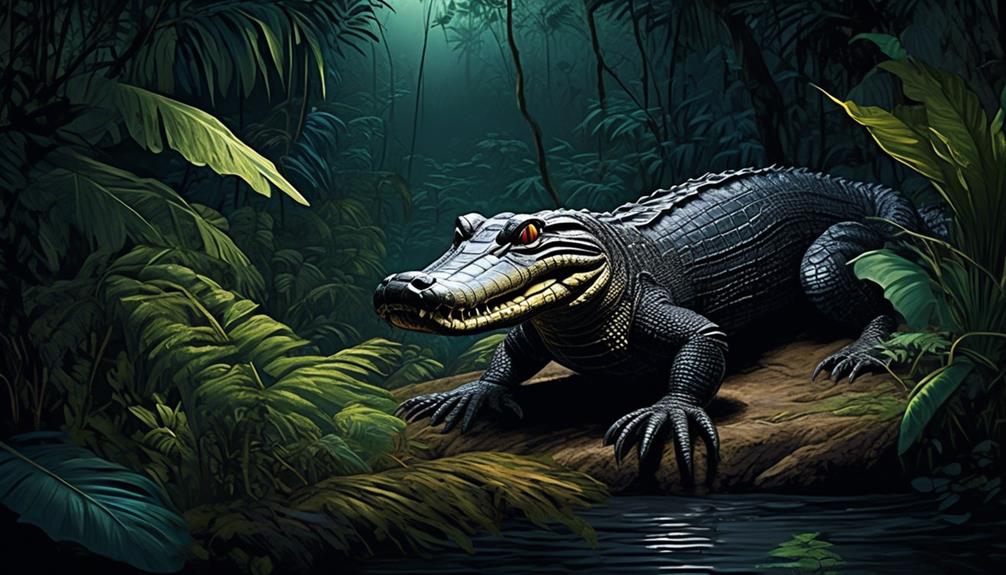
Black Caiman, with their powerful jaws and territorial behavior, pose a significant threat to anyone who encounters them in the water sources of Peru’s rainforest. These formidable reptiles, scientifically known as Melanosuchus niger, are the largest members of the alligator family in South America, reaching lengths of up to 16 feet (5 meters). Their dark, scaly skin allows them to blend seamlessly into the shadows, making them even more elusive and dangerous.
Black Caiman are known for their strength and aggression, making them apex predators in their habitat. They’ve a diet that consists of fish, birds, reptiles, and mammals, and their powerful jaws allow them to catch and consume their prey with ease. Their territorial nature means that they fiercely protect their hunting grounds, posing a threat to any creature that ventures into their domain.
Encounters with Black Caiman can result in serious injuries or even fatalities. Their bite force is incredibly strong, capable of crushing bones and causing severe damage. If attacked by a Black Caiman, seeking urgent medical attention is crucial to treat the wounds and prevent further complications.
These magnificent creatures are currently listed as threatened due to habitat loss and illegal hunting. Conservation efforts are underway to protect their populations and ensure their survival in the wild. As visitors explore the water sources of Peru’s rainforest, it’s essential to be aware of the presence of Black Caiman and exercise caution to avoid any dangerous encounters.
Green Anaconda
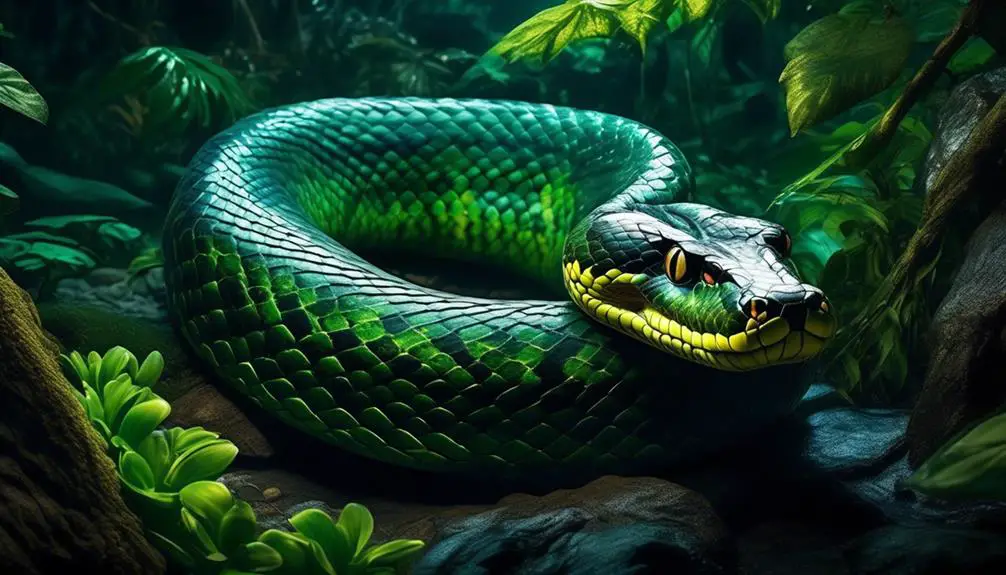
As we shift our focus from the formidable Black Caiman, let’s now explore the fascinating world of the Green Anaconda, a massive and powerful reptile found in the water sources of Peru’s rainforest. The Green Anaconda, scientifically known as Eunectes murinus, is one of the largest snakes in the world, reaching lengths of up to 30 feet and weighing over 500 pounds. Its muscular body is covered in dark green scales, allowing it to blend seamlessly with its surroundings.
The Green Anaconda is a constrictor, relying on its immense strength to overpower and squeeze its prey. It’s capable of suffocating large mammals, such as capybaras and caimans, by tightly coiling its body around them. Its jaws are equipped with rows of sharp, backward-curving teeth, enabling it to hold onto its prey while constricting.
This formidable predator is primarily found in the water sources of the rainforest, including rivers, lakes, and marshes. It’s a proficient swimmer, using its powerful body and paddle-like tail to navigate through the water with ease. The Green Anaconda is also known to spend a significant amount of time basking on the banks, soaking up the sun to regulate its body temperature.
Encounters with the Green Anaconda can be dangerous, as it’s capable of inflicting serious injuries with its powerful bite and constriction. If attacked, it’s crucial to seek urgent medical attention. Although the IUCN hasn’t evaluated the conservation status of this species specifically, habitat destruction and hunting pose significant threats to its population.
Electric Eel

The Electric Eel, scientifically known as Electrophorus electricus, possesses a unique and powerful defense mechanism – an electrical charge. This charge isn’t only capable of stunning its prey, but it can also incapacitate large mammals, including humans.
Found in freshwater locations within the rainforest, the Electric Eel is a dangerous animal that should be approached with caution, requiring urgent medical attention if attacked.
Electrical Defense Mechanism
The Electric Eel, also known by its scientific name Electrophorus electricus, possesses an astonishing defense mechanism through the use of its powerful electrical charges. This unique ability allows the Electric Eel to stun or immobilize its prey, as well as deter potential predators.
The Electric Eel has specialized cells called electrocytes, which are stacked in series and can generate electric currents. When the eel detects a threat or prey, it discharges high-voltage shocks of electricity. These shocks can reach up to 600 volts, making the Electric Eel one of the most powerful electrical animals in the world.
The electrical discharge isn’t only used for defense and hunting, but also for navigation and communication. It’s truly a remarkable adaptation that showcases the incredible diversity of defense mechanisms in the animal kingdom.
Habitat and Behavior
The habitat and behavior of the Electric Eel showcase its remarkable adaptation as a powerful and specialized predator in the freshwater locations of the Peruvian rainforest.
Electric Eels inhabit rivers, streams, and swamps, where they rely on their unique ability to generate and discharge electric shocks for various purposes. With their elongated, snake-like bodies that can reach up to 8 feet in length, Electric Eels are skilled at camouflaging themselves among submerged vegetation and murky waters.
They’re primarily nocturnal hunters, using their electric organ to navigate and locate prey in low light conditions. When hunting, the Electric Eel emits low-frequency electric pulses that can detect the presence of nearby prey, such as small fish and invertebrates.
Once the prey is located, the Electric Eel delivers a powerful electric shock to stun and immobilize its victim, allowing it to swallow it whole. This unique adaptation and hunting strategy make the Electric Eel a formidable predator in its Peruvian rainforest habitat.
Piranha
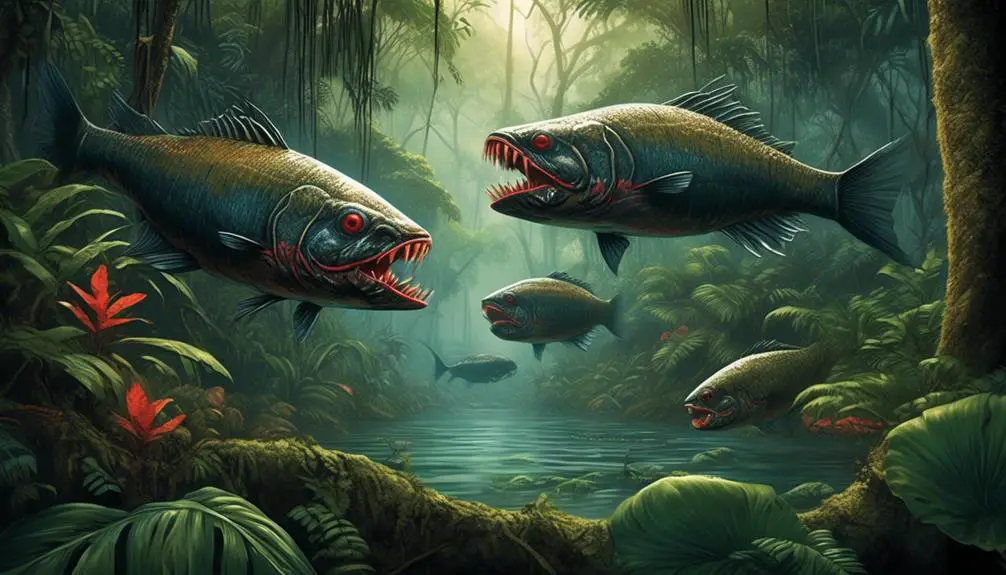
Piranhas, notorious for their razor-sharp teeth and powerful jaws, are freshwater fish found in the rainforest of Peru. These formidable creatures belong to the family Serrasalmidae and are known for their aggressive feeding behavior. With their strong jaws, they can deliver a bite that can cause severe injury or even death.
Piranhas are typically found in slow-moving rivers, lakes, and flooded areas of the rainforest. They’re well-adapted to their environment, with their streamlined bodies and sharply pointed teeth, which are specifically designed for tearing flesh. Their diet consists mainly of other fish, but they’re opportunistic feeders and will devour anything they can overpower.
Despite their fearsome reputation, piranhas aren’t typically a threat to humans. While they may scavenge on dead animals or bite if they feel threatened, they generally avoid direct contact with humans. However, caution should still be exercised when swimming in piranha-infested waters, especially if there are open wounds or blood in the water, as this can attract their attention.
In the event of a piranha bite, seeking urgent medical attention is crucial. The wounds can be deep and may require stitches, and there’s always a risk of infection. It’s important to clean the wound thoroughly and apply appropriate first aid measures. With proper medical care, most piranha bites can be treated effectively, minimizing the risk of further complications.
Most Dangerous Animal in Peru
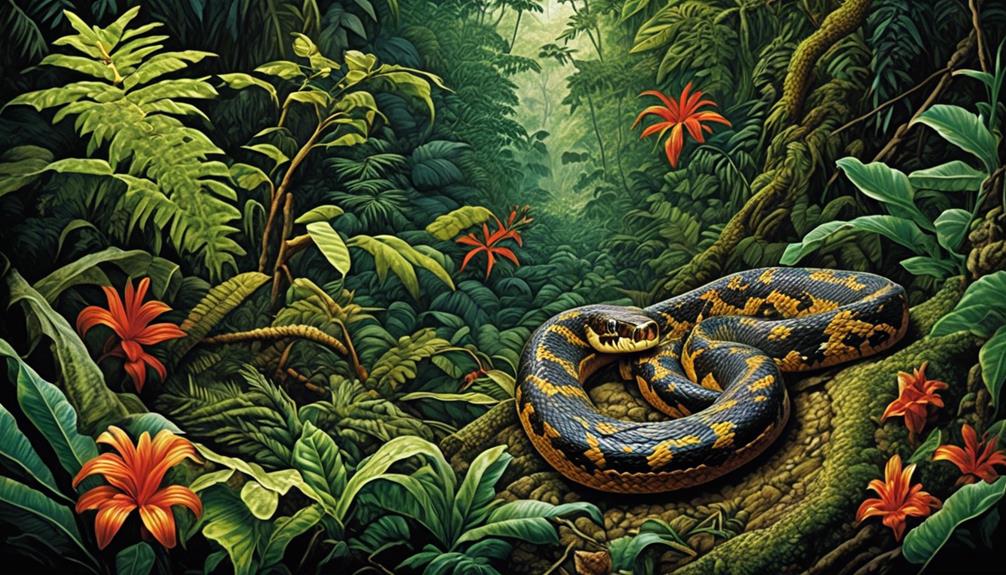
Considered one of the most lethal creatures in Peru, the poison dart frog poses a significant threat with its highly potent toxic excretions. This amphibian, scientifically known as Phyllobates terribilis, releases a poison that’s so powerful that it can be fatal to humans.
The poison dart frog is typically found in wet areas of the rainforest, such as marshes, streams, rivers, lakes, and swamps. Despite its small size, the frog’s vibrant colors serve as a warning to potential predators. Accidental encounters with this dangerous creature are likely, especially when exploring the jungle.
The poison excreted by the poison dart frog has no known antidote. If someone comes into contact with the frog’s toxic secretions, their body must rely on its own defenses to combat the effects. It’s essential to seek immediate medical attention if exposed to the poison dart frog’s venom. Due to its high toxicity, this frog is considered a significant threat to both humans and other animals in Peru.
It is crucial to exercise caution and be aware of the presence of the poison dart frog when venturing into the Peruvian rainforest. Despite its small size, this creature possesses a deadly weapon that shouldn’t be underestimated.
Most Dangerous Snake in Peru
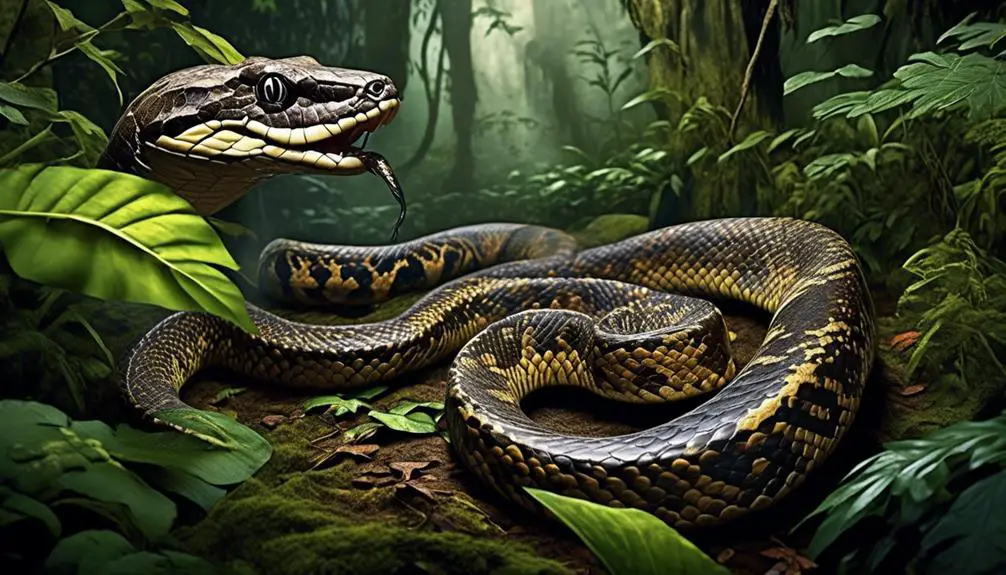
When exploring the jungles of Peru, one must be cautious of encounters with the most dangerous snake found in the region – the Anaconda. Known for their immense size and strength, Anacondas are capable of constricting and suffocating humans.
Referred to as the ‘man-eating snake,’ their deadly behavior makes it crucial to take precautions and avoid dangerous encounters in their habitat.
Deadly Anaconda Behavior
The deadly behavior of the anaconda, the most dangerous snake in Peru, is characterized by its immense size and tremendous strength. Anacondas are known for their ability to constrict and suffocate their prey, which includes humans. These snakes can grow to be up to 30 feet long and weigh over 500 pounds, making them one of the largest snakes in the world. Their muscular bodies allow them to wrap tightly around their victims, squeezing the life out of them. The anaconda’s jaws can stretch wide, allowing them to swallow prey whole, even if it is larger than their own head. It is important to exercise caution and avoid encounters with these powerful predators in order to stay safe in the Peruvian jungle.
| Deadly Anaconda Behavior |
|---|
| Immense size and strength |
| Constrict and suffocate prey |
| Grow up to 30 feet long and weigh over 500 pounds |
| Swallow prey whole, even if larger than their head |
Avoiding Dangerous Encounters
To ensure your safety in the Peruvian jungle, it’s crucial to be knowledgeable about the behaviors and habitats of dangerous animals, including the most dangerous snake in Peru, the anaconda.
Anacondas are the most dangerous snakes in Peru due to their size and strength. Capable of constricting and suffocating humans, they’re often referred to as man-eating snakes.
To avoid dangerous encounters with anacondas, it’s important to take precautions when near water sources such as rivers, lakes, and marshes, as these are their preferred habitats. Be mindful of your surroundings and avoid swimming or wading in areas where anacondas may be present.
Additionally, it’s advisable to travel in groups and make noise to alert snakes of your presence, reducing the chances of surprise encounters.

Erzsebet Frey (Eli Frey) is an ecologist and online entrepreneur with a Master of Science in Ecology from the University of Belgrade. Originally from Serbia, she has lived in Sri Lanka since 2017. Eli has worked internationally in countries like Oman, Brazil, Germany, and Sri Lanka. In 2018, she expanded into SEO and blogging, completing courses from UC Davis and Edinburgh. Eli has founded multiple websites focused on biology, ecology, environmental science, sustainable and simple living, and outdoor activities. She enjoys creating nature and simple living videos on YouTube and participates in speleology, diving, and hiking.

